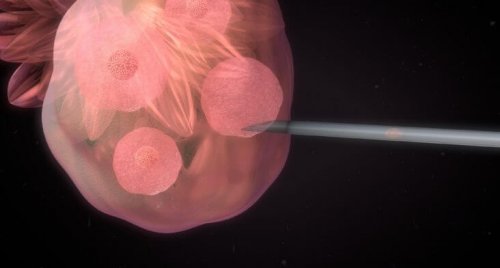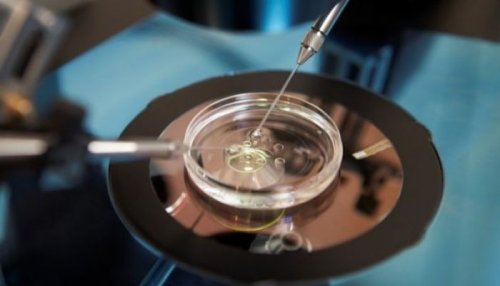Artificial Insemination: What It Is and How To Get It

Artificial insemination is a very important possibility for many couples having trouble conceiving. It’s a procedure that consists of introducing a semen sample in a woman’s uterus in a laboratory after inducing ovulation.
It’s a simple, slightly invasive, low-risk process for the woman. You don’t need anesthesia and the doses of medication is very small. Homologous artificial insemination (HAI) is where the semen comes from the patient’s partner.
When is HAI Necessary?
According to the Valencian Institute of Infertility, one of the most respected in the world, HAI is used for:
- Couples under 38 years old with sterility problems.
- Women who have at least one permeable fallopian tube.
- Women with ovulatory dysfunctions.
- Couples where the male has slight defects in the quality of his semen.
- Couples with difficulties having sex.
On other occasions, a voluntary semen donor is used to allow a woman to become pregnant through this procedure. This technique is called heterologous artificial insemination. These are the most frequent cases:
- Couples in which the man is azoospermic (absence of sperm in the semen).
- Certain dominant genetic conditions in men.
- HIV-positive couples.
- Women without a male partner.
Cost and Success Rate
Since it’s a simple process compared to other assisted reproduction methods, artificial insemination has a low price.
In Europe, it usually costs between 600 and 1,400 euros. In Argentina, the price ranges between 1,100 and 3,800 pesos. If you need a sperm donor, the price may go up. The place you have this done may also affect the final price.
On the other hand, in Mexico it could cost between 3,000 and 13,000 pesos. If you need a sperm donor, you have to add an additional 2,500 pesos.
Finally, in the United States, artificial insemination can cost between 1,000 and 4,000 dollars. It also depends on the donor, the state and the institution that does it.
Factors that Influence a Successful Artificial Insemination
Regarding success rates, there are several factors that influence the chance that artificial insemination will work. Some of them are:
- The woman’s age: After 35 or 37 years old, the chance of this process working successfully declines. This is because the quality of the woman’s eggs decreases.
- Ovarian stimulation treatment: It’s important to analyze each woman’s body to personalize her hormonal treatment to cause ovulation. If it’s too strong or too weak, it won’t work.
- Thickness of the endometrium: This is the layer of the uterus where the fertilized egg implants itself. It must be in good condition to receive the embryo.
- Obtaining and preparing semen: Semen must be collected by masturbation. They shouldn’t masturbate or have sex for 3 days before donating. Then, they store it in a glass container. Finally, the doctors perform several procedures to choose the best sperm.

In conclusion, overall results show that effectiveness is around 15% in women with more severe infertility. However, it can reach 70% in couples without many problems.
However, for male infertility the success rate is between 9.5% and 43%.
After the Artificial Insemination
For the process, the woman sits like she would for a checkup and the doctor inserts the seminal fluid in the back of her uterus. This is done by inserting a tube through the vagina. Once the gynecologist does the procedure, the woman will need to rest for about 30 minutes.
“Homologous artificial insemination (HAI) is where the semen comes from the patient’s partner.”
After all of this, the patient can leave the clinic and go back to her normal routine. This is, of course, unless the doctor recommends the patient does something else.
If you feel swelling, pain or general discomfort after artificial insemination, don’t worry. It may be due to the stress this process might cause. It could also be caused by irritation from putting in the tube or the medication that causes ovulation.